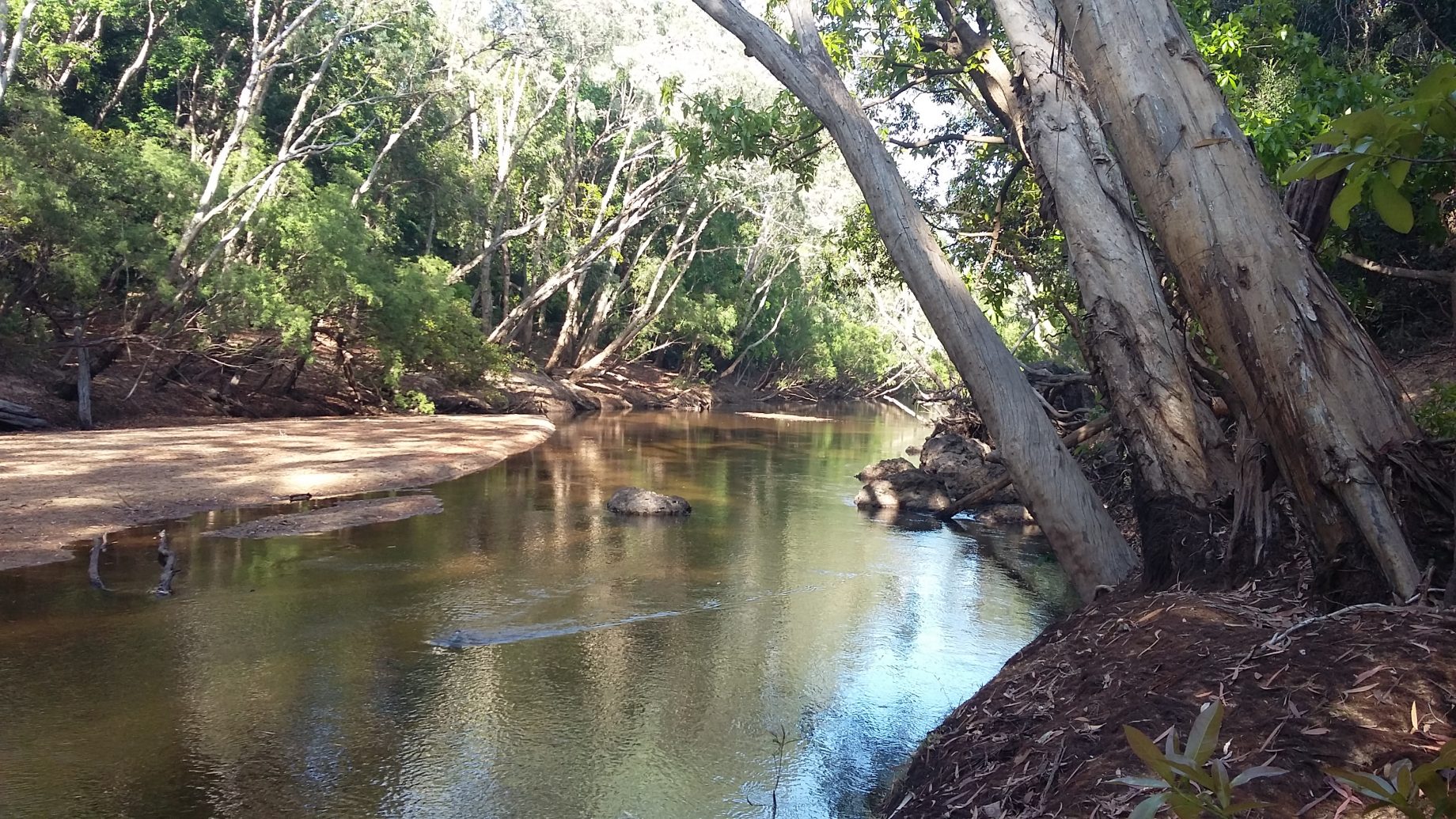Some items were packed away last night, however the majority of packing was left until this morning when our journey south was to commence. We were up at 6:00am with the first light of the day just appearing in the eastern sky. We needed the Tvan lights on to prepare breakfast; eventually turning them off once the sun got higher in the sky.
We had a number of pressing matters to attend to before hitting the road. We had exhausted one of our two 4kg gas bottles a week or two back and were probably well into the other one. It was decided that, between Pajinka and Mareeba (perhaps four days away), Bamaga was the most likely place to get a replacement. We paid for our “swap ‘n’ go” at Cape York Traders, and Chris strapped the replacement into place in preparation for the bumpy ride south.
Bread and fruit buns were purchased from the popular Bamaga Bakery and Café, where pies, toasties and flavoured milk seemed to be in great demand for breakfast. The cheapest diesel was at Injinoo, where it was being sold for $1.80 per litre (at Bamaga it was selling for $2.03) – quite a difference when needing 80 litres to fill up the tank.
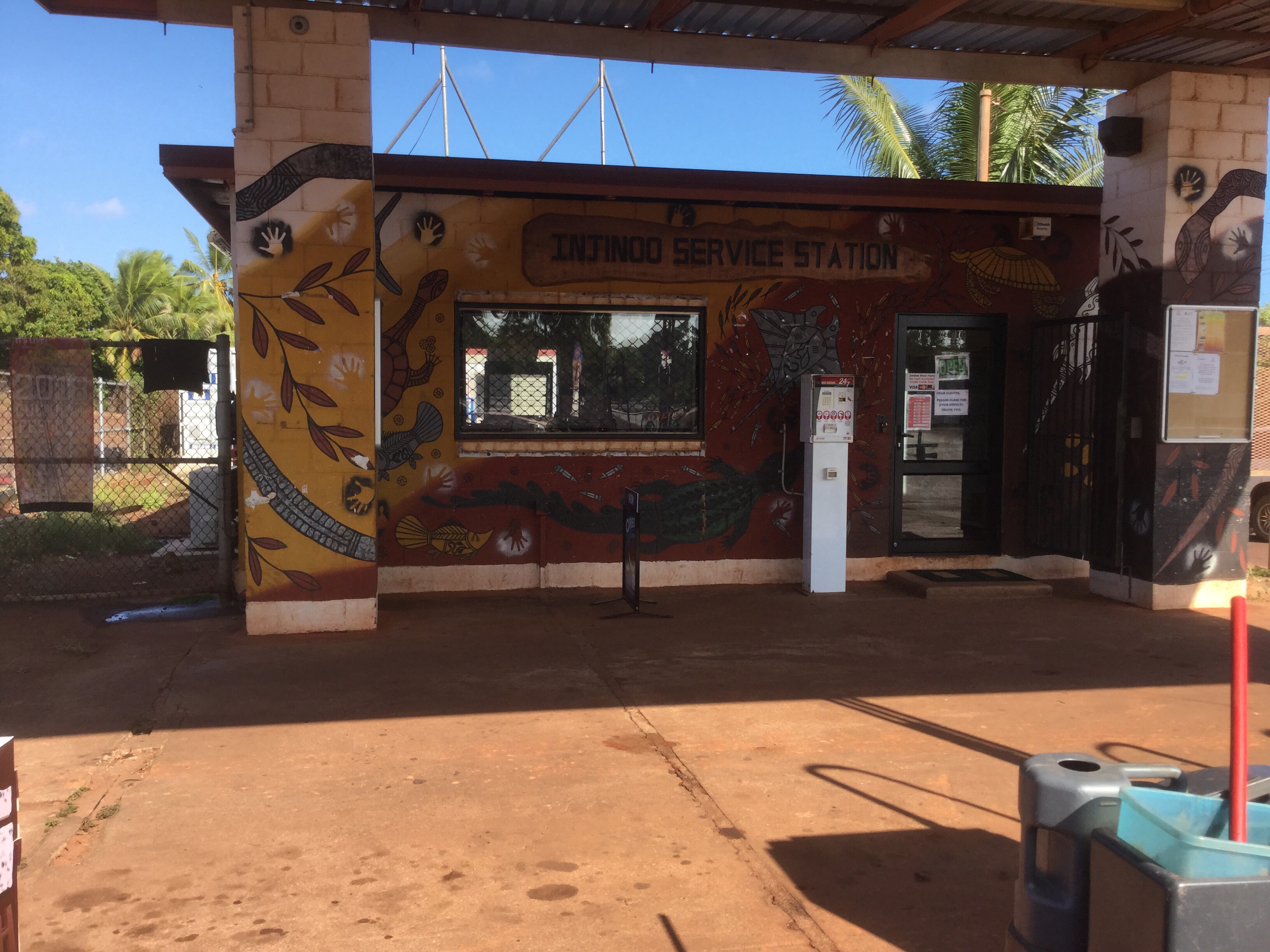
It wasn’t long before we were back of the gravel road leading to the Jardine River ferry. Billowing clouds of dust hung in the air behind us as we moved through areas of roadworks on the approach to the ferry crossing. We joined a short queue and had to wait while those ahead were ferried across. Minutes later we had crossed the Jardine River and were throwing up more clouds of dust as we continued on our way.
[wpvideo DIgF29eL ]
We missed the turn-off to Fruit Bat Falls, but Chris quickly noticed we had discrepancy on the GPS used to track our position and we were back on track in no time. These falls are part of the system that flows through Eliot and Twin Falls where we stayed on the way north. Fruit Bat Falls are “day use only” and another safe place for a swim. They are about 3 kms off the main track and a short walk from the car park at the end of the track. The clear waters plunged over a wide waterfall into two deep pools ideal for a refreshing swim.
We had been in the water for about 10 minutes, sharing the setting with two other couples, before a tour group descended on the peaceful setting. Deck chairs were set up for those unable / unwilling to go for a swim, while others brought snorkels, goggles and face masks for reasons we couldn’t fathom. We adjourned to the air conditioning in the Prado as the temperature passed 30C and continued on our way having washed some of the accumulated dust from this morning’s pack-up away.
Out next sidetrack was a drive through (mostly) rainforest (we were delighted to spot a beautiful blue Ulysses butterfly en route) to Captain Billy Landing, where we were booked to stay overnight. The landing was built some time back to move cattle to either Weipa or Cairns. It is now crumbling away and will probably to gone without a trace in another couple of years. The camp site is notoriously windy; today was no exception and there was very little shade to protect us from the hot sun. We stopped for lunch and spoke to two older men who had camped there overnight. They confirmed the gusty wind had hardly eased since they had been there. The decision was made to press on, in the hope of finding a more sheltered location to stop the night.
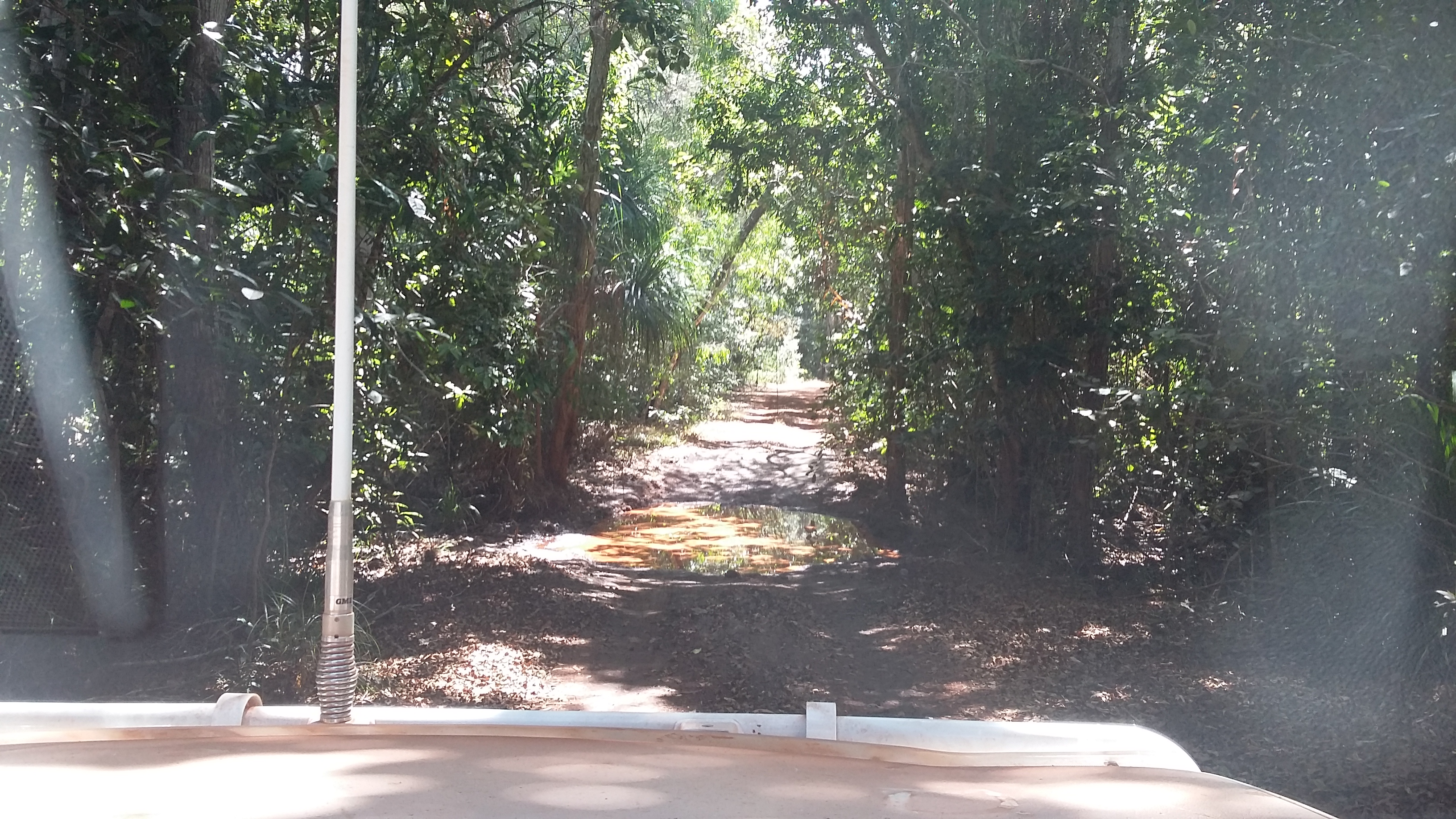
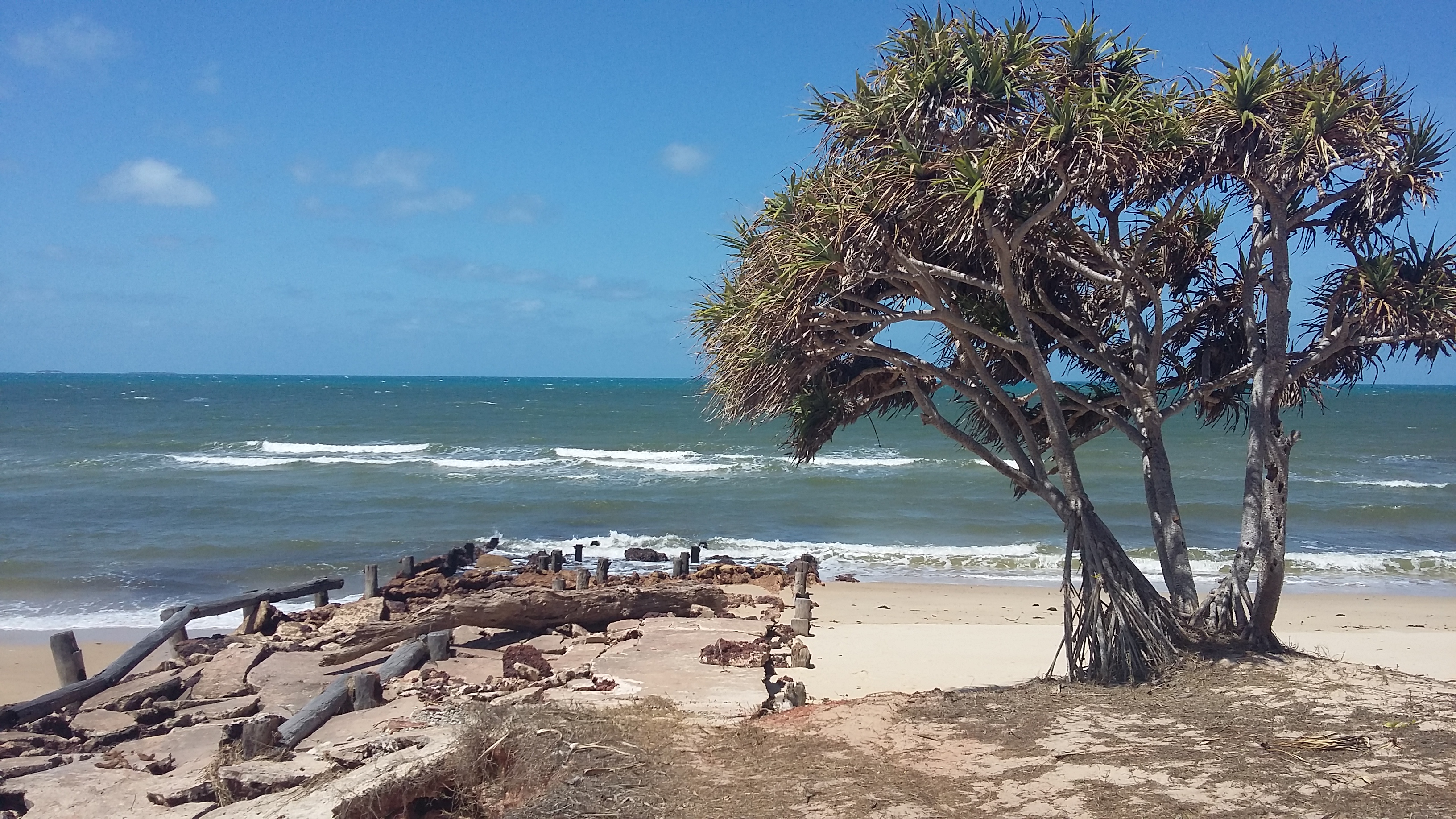
A large, black feral pig was in no hurry to cross the track in front of us as we continued throwing up clouds of dust. The corrugations appeared to be worse than when we were heading north; maybe now that the exodus from the Cape has begun the increased traffic is taking a toll on the gravel sections of the track.
Bramwell Junction, where the OTT and PDR go their separate ways, was eventually upon us with its towering termite mounds and the “best burgers on the Cape”; a small section of bitumen on the approach provided brief respite from the corrugations. We continued southward on a deteriorating gravel track.
Morton Telegraph Station is one of the remaining stations on the Cape and offers basic camping facilities with the bonus that the campgrounds are well grassed and shaded by majestic mango trees that are heavily laden with unripe fruit. We were soon setting up in the shade of the established trees, along with about a dozen other travellers. The red sunset soon faded, revealing a sky full of stars and a clearly defined Milky Way directly above our campsite – or so it seemed.
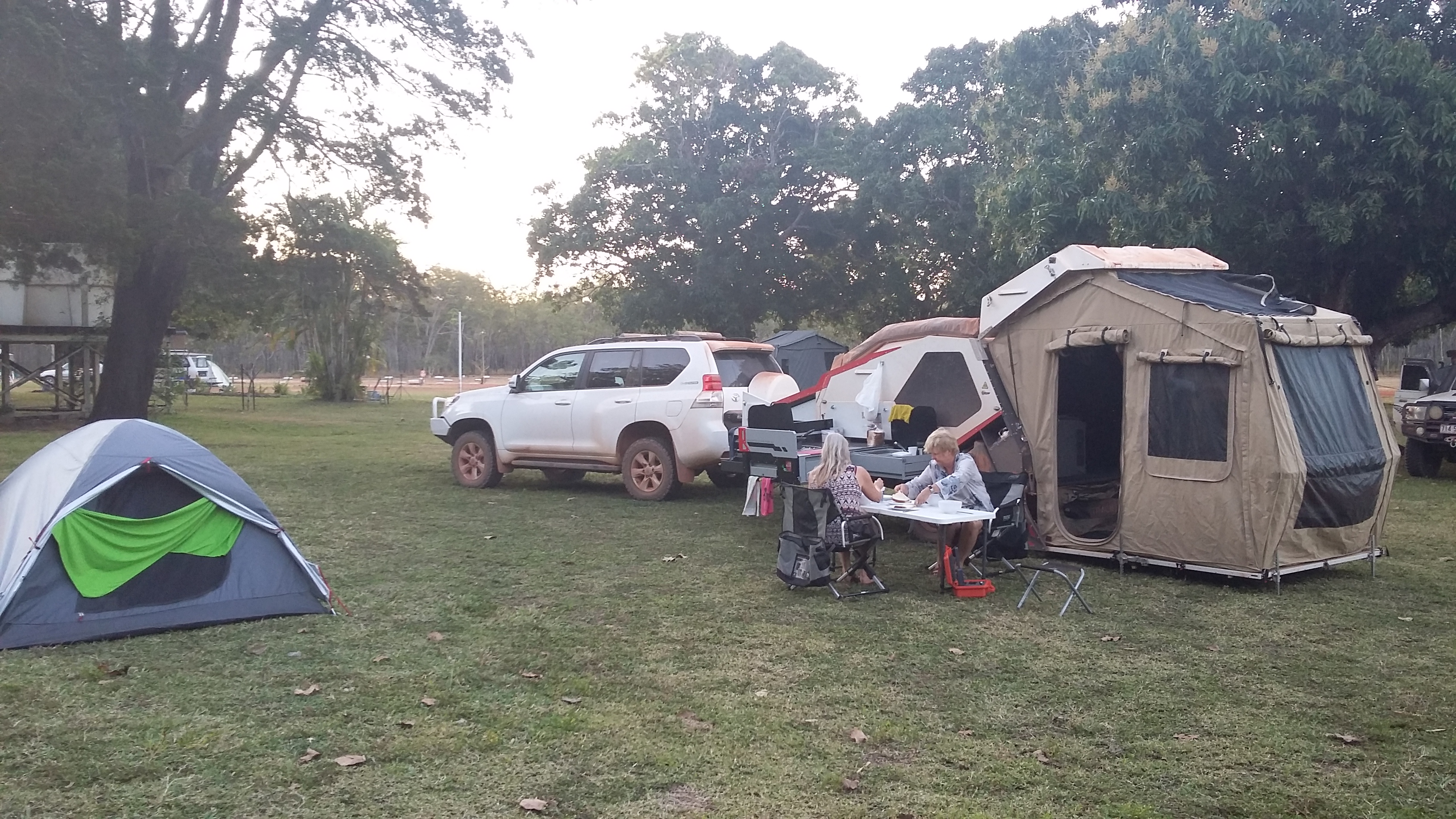
Bush cows have slowly wandered into the camping area under cover of darkness to eat up any fallen tree mangos. They can be heard snuffling among the leaves searching for fallen fruit. Hopefully they keep the noise down during the night.
